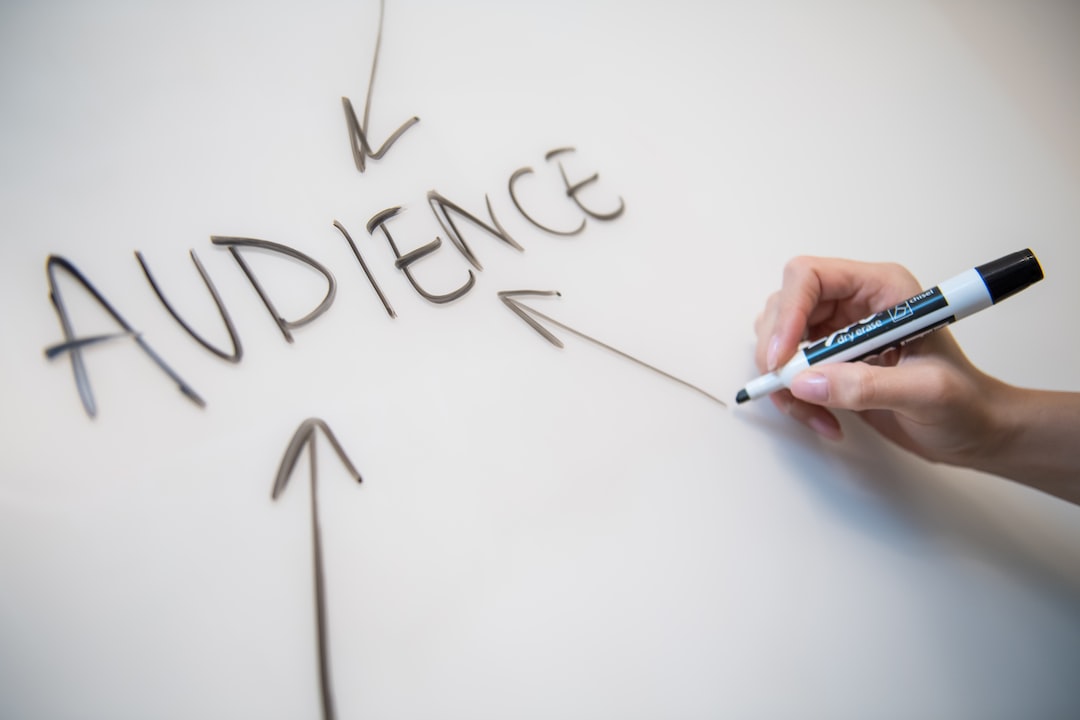On one nice sunny day, an unsuspecting gentleman, Josh hopped into his local shop to buy a pack of cigarettes. It’s a bad habit, but let’s respect people regardless of their seemingly harmless lifestyle choices.
After selecting the right make of cigarettes, Josh, just like any law-abiding citizen, paid for his purchase.
And since he paid with his credit card, he didn’t instantly notice the error in price.
But later he noticed that his card was charged $23,148,855,308,184,500 (23 quadrillion, 148 trillion, 855 billion, 308 million, 184 thousand and 500 dollars.
Of course, this was not only a bit over Josh’s credit card limit, but also a tad over the world’s combined GDP.
And while this event is rather interesting, it has also made card owner, Josh Muszynski, the man deepest in debt in the whole history of mankind, which also made him a record holder, thus famous.
And very often, maybe not to the same degree, this sense of deep debt runs through the minds of many business owners’ minds.
More specifically, they spend the king’s ransom on content marketing campaigns, but their bottom lines don’t show a dickybird of an improvement.
Then they erroneously conclude…
Table of Contents
ToggleContent Marketing Doesn’t Work For Us
But the mistake is not in content marketing, but this new type of content marketing strategy that has been promoted on the Internet in recent years.
Let me illustrate it for you.
Traditional content marketing that was developed and fine-tuned at the dawn of the 20th century was all about using useful information to help buyers to make decisions. Marketers wanted to use good content to polarize the market to people who buy and people who don’t.
Marketers have always been able to handle clear “No, I don’t want it” answers.
What has been driving them more frustrated than a centipede on a shoe-shopping spree is the “I’m not sure” answers.
Traditional content marketing was all about aiding the decision-making process, so by the time buyers meet salespeople, buyers are almost 100% sold, so buyers and sellers could conclude their deals at the meetings. And if buyers are not interested, they don’t even meet salespeople, but tell them they’re not interested.
Again, a yes-no duality.
So, in traditional content marketing, using a fishing analogy, you go to the river with a bucket of fish bait and your fishing gear.
You feed the fish in order to catch some. But feeding the fish is the means to an end… a nice slap-up fish dinner.
But modern content marketing is the equivalent of going to the river with a bucket of fish bait and dumping it into the river to feed the fish. Then repeat it every day forever.
Feeding the fish has become an end by itself.
And after having dumped the bait in the river, you hop into the supermarket to buy some low-grade, mercury-overdosed, genetically modified farmed salmon.
And what do we see in forms that practice this modern content marketing? They flood the Internet with tonnes of low-quality content and use call-centers to cold-call thousands of people to find new business.
But there is one element that you can put into your content, and it can become your fishing gear, so then you’ll be ready to catch fish and lay the table for a nice dinner.
And This One Ingredient Is Sales Copy
Adding the elements of sales copy to marketing content is like serving organic meat (e.g. Whole Foods 5+ ratings meat) to your guests who’ve been eating supermarket meat all their lives.
A completely new world.
But first, let’s look at the difference between content and copy.
Content
- Tells, informs, entertains and educates.
- Written in a 1-to-many tone.
- Past-focused: As a result of some past events, this piece of content has been written.
- Once the writing is done, it’s all done.
- Verbosity rewarded.
- Passive, impersonal, crowd-pleasing tone
- Presents facts and ideas in a dry and objective manner.
- Follows academic and journalistic best practices.
- Deals with readers at arm’s length in an impersonal and indifferent manner.
- Expressed or implied separation from the reader.
- Shapes public opinion.
Copy
- Tells, informs, entertains, educates and sells.
- Written in a 1-to-1 tone.
- Future-focused: As a result of this copy, future sales will happen.
- Once the writing is done, perpetual testing and tweaking (T & T) begin.
- Strict length constraints: Brevity rewarded.
- Active, personal, conversational, engaging and intriguing tone.
- Presents problems and opportunities in an engaging manner.
- Follows marketing and behavioral best practices.
- Deals with readers at shoulder-to-shoulder in a personal and conversational manner. The writer and reader are in the same boat.
- Expressed or implied empathy for the reader.
- Elicits specific actions from readers.
Having said that, it’s important that your writing is a good blend of content and copy.
Brian Clark of Copyblogger who put it this way:
“Copy without content is hucksterism, and content without copy is charity.”
The essence is this: You need both content and copy.
As Mark Twain put it very eloquently many moons ago…
“Thunder is good, thunder is impressive; but it is lightning that does all the work.”
Imagine that thunder is your content. But to have a good impact, you still need lightning, that is, copy.
5 Good Things Good Copy Can Add To Your Content
Copy Puts Your Content On Steroids
I know, I know, it sounds a tad controversial, but let’s look beyond sports.
Athletes use steroids to achieve their goals more quickly and with higher certainty.
If you have good content to start with, copy can achieve the same thing… of course, 100% legally.
Let’s stop for a moment…
In copy, there are two types of steroids:
1.Illegal: Hype, fluff, plain BS and emotional hot-button pounding. E.g.: “Imagine what it would mean to you if you could control people’s minds such that they would instantly buy everything you want to sell them?”
2.Legal: Empathy, intrigue, compassion, etc. E.g.: “Imagine what it would mean to you if you could learn how your buyers think and make decisions, so you could present your offers from the same perspective as your buyers look at them, giving you the best chance to sell?”
Do you feel the difference?
#1 is plain manipulation and trickery.
#2 is all about learning how buyers think and make decisions, so you can align your sales process with their buying processes.
The key is to use legal steroids and stay away from the illegal ones, because they can seriously undermine your brand.
With every piece of copy eliciting very specific actions, the reading of each piece takes buyers closer to the decision-making point.
And remember, if they decide “No”, that’s fine. What we want to avoid is the lack of decision.
Decisions are vital because they can be tracked. Lack of decision can’t be tracked. It could be either “Yes” or “No”. We can’t know for sure.
But the essence of good marketing is that we want to know everything that is relevant and we can make known.
Copy Advances Buyers In Your Sales Funnel Without Human Effort
We know from the Corporate Executive Board that buyers are more than halfway through their decision-making process, 57% exactly, when there are first willing to talk to salespeople.
Some experts predict this number to be 84% by 2020.
Oh, and by that time, on average, there are 5.4 buyers. All right, don’t ask me about the 0.4 person.
A large number of deals go south because marketing hands over the lead to sales far too early. Salespeople contact their lead, and leads get scared off.
What good copy can do for you is that it can quietly and unassumingly move buyers forward in your sales funnel, but buyers are calm and relaxed with their guards down.
But when interacting with salespeople, buyers are uptight with their guards up. Suspicion, skepticism and cynicism kick in.
Not to mention that manual follow-up by salespeople is expensive.
So, lots of buyers get scared off by salespeople and your firm actually pays them for it.
Use good copy to stay in touch with buyers, and use salespeople only when buyers are ready to meet them.
Copy Let’s Your Subject Matter Expertise Shine
In two independent studies in 2005 and 2008 respectively, the Wellesley Group (RainToday) and Broderick & Co. found out what selection criteria successful executives of Global Fortune 1000 companies use to recruit professionals.
The two top criteria are “subject matter expertise in our (buyer’s) industry” and “hands-on experience in our (buyer’s) industry”.
Good copy allows your subject matter expertise and hands-on experience in your buyer’s industry to shine so brightly that your competition can’t even come close to you.
Granted, there are buyers who don’t recognize this, and no matter how much industry-specific experience you have, they treat you just as everyone else.
What to do then?
The best option may be to walk away.
If they don’t appreciate the two most important factors that you bring to the table, they are likely to mistreat you in other ways too.
Copy Elevates Your Premium Content To Soft Sales Messages
Many business people are worried that if they use premium content, then they run out of materials for their paid programs.
But that’s humbug.
In every profession, there are lots of little details that can’t be shared so easily.
When it comes to knowledge, we differentiate between explicit and tacit knowledge.
In music, the chromatic scale is explicit knowledge because most people can learn it relatively easily.
But to take “scale knowledge” to the level of Mozart, Eddie Van Halen or Dame Kiri Te Kanawa goes way beyond merely “learning” the scale.
Don’t be alarmed that people learn your explicit materials. That’s okay. If they don’t learn it from you, they can learn it from someone else.
But rest assured, they can never learn your tacit materials.
And the good news is that in any profession, the ratio is about 10-20% explicit knowledge and 80-90% tacit knowledge.
The other big difference is that explicit knowledge can be measured by anyone.
But tacit knowledge has to be judged and discerned by someone with an already high level of expertise.
So, circling back to music, feel free to release your free course on the chromatic scale (explicit knowledge). You still have an impressively lot to teach about tacit knowledge to people who engage your paid services.
Besides, when you use premium content, people don’t feel you’re holding something back, which, in turn, boots your credibility.
Copy Makes Content Measurable
One distinctive factor between content and copy is that copy has a call to action, and that action can be tracked.
And whatever can be tracked, can be measured and improved.
Large advertising agencies have been promoting the notion that marketing can’t be quantified and on that premise, they ask their clients to spend more and more on b2b marketing and paid advertising.
That’s good for agencies because they get paid based on their clients’ marketing budgets. In plain English, agencies simply pocket a certain percentage of their clients’ advertising budgets, regardless of the success or failure of advertising campaigns.
We discussed at the beginning of this article that content informs and educates.
It’s copy that creates action. And the presence or absence of that action can be measured. And this is how content can be improved. We want people to consume (Listen, read or watch) our content and we also want them to take the specific action that the article asks them to take.
For instance, an article ends by asking readers to download a cheat sheet that is freely available without registration.
Then the cheat sheet ends by asking readers to download a special report or white paper in the B2B world that requires registration.
Then the special report ends by asking readers to watch a video that goes into the details of the report’s topics.
Then the video ends by asking viewers to register for a webinar that goes even deeper into the discussed topics.
And what do you think sells the next step.
Your knowledge and personality at the webinar. Yes, you need both expertise and personality.
And all the steps are measurable and can be improved.
Summary
Yes, you can use butt-naked content (remember fish bait) in your materials, but since you invest in creating them anyway, you might as well include all the vital copy elements (fishing gear), so your new content can be called an investment, not just a cost.
Granted, hiring someone who understands copy is more expensive than a pure content writer, but ask yourself this question.
“Do I want this piece to contribute to the profitability of my business?”
If your answer is “yes”, then get a copywriter. You’ll be glad down the road for your decision.











